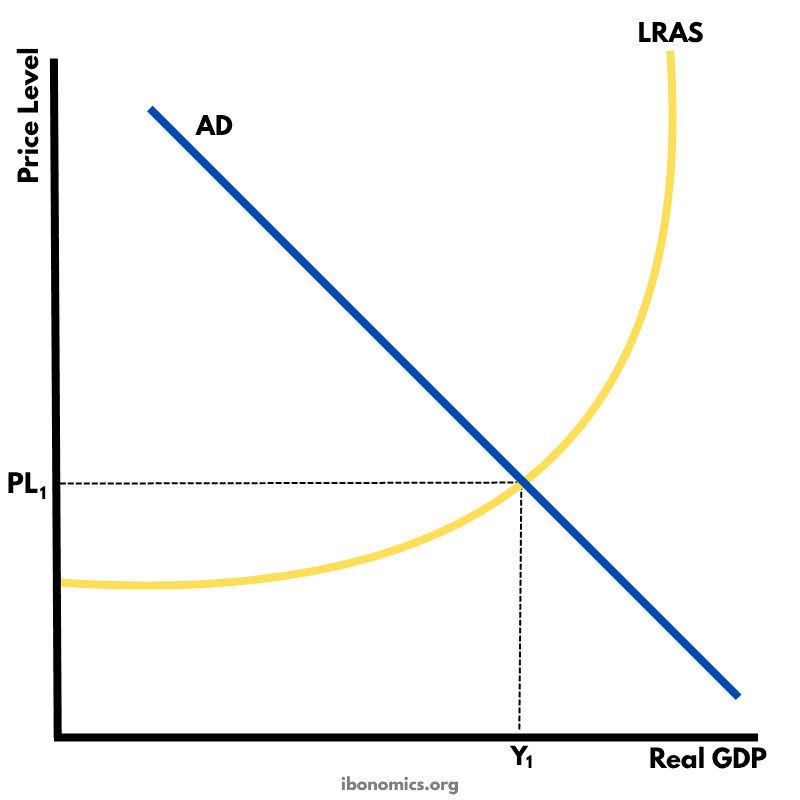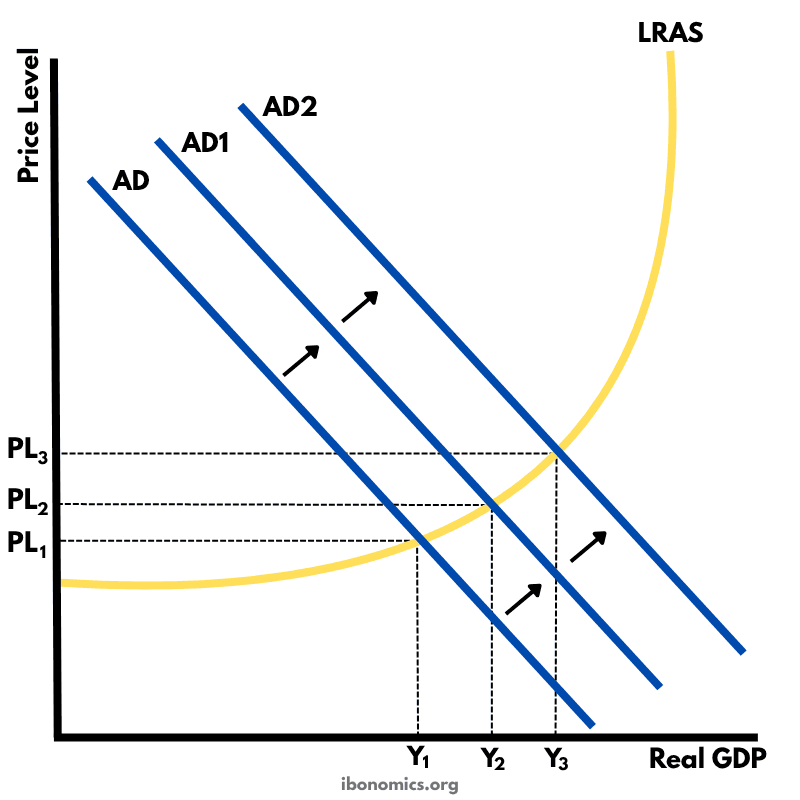Welcome to IBonomics! We are excited to launch and hope you find the website useful! Learn more about us here!
Welcome to IBonomics! We are excited to launch and hope you find the website useful! Learn more about us here!
A Keynesian aggregate demand and long-run aggregate supply (AD–LRAS) diagram showing how real GDP and the price level interact across different phases of the economy, including spare capacity and full employment.

AD: Aggregate Demand, downward sloping due to the wealth, interest rate, and net export effects.
LRAS: Keynesian Long-Run Aggregate Supply, horizontal when there's spare capacity, upward-sloping as resources are used up, and vertical at full employment.
PL1: Price level at equilibrium where AD intersects LRAS.
Y1: Full employment level of output, where all resources are fully utilized.
In the Keynesian model, the LRAS curve is horizontal at low levels of output due to spare capacity, then upward-sloping as resources tighten, and vertical at full employment (Y1).
The AD curve slopes downward, reflecting the inverse relationship between price level and real GDP demanded.
At low levels of output, increases in AD lead to higher real GDP without inflationary pressure.
As the economy approaches Y1, increased AD results in higher prices as capacity is reached, causing inflation.
This model supports the use of demand-side policies, especially during recessions when the economy operates below full employment.
Explore other diagrams from the same unit to deepen your understanding

A diagram illustrating the fluctuations in real GDP over time, including periods of boom, recession, peak, and trough, relative to the long-term trend of economic growth.

This diagram shows the intersection of the aggregate demand (AD) and short-run aggregate supply (AS) curves to determine the equilibrium price level and real GDP.

A diagram showing the Classical model of aggregate demand (AD), short-run aggregate supply (SRAS), and long-run aggregate supply (LRAS), used to explain long-run macroeconomic equilibrium.

A diagram showing an output (deflationary) gap, where the economy is producing below its full employment level of output (Ye).

A macroeconomic PPC diagram illustrating the trade-off between producing consumer goods and capital goods, highlighting opportunity cost and future growth implications.

This diagram shows how an initial increase in aggregate demand leads to a multiplied increase in national output (real GDP) and price level within the Keynesian framework.